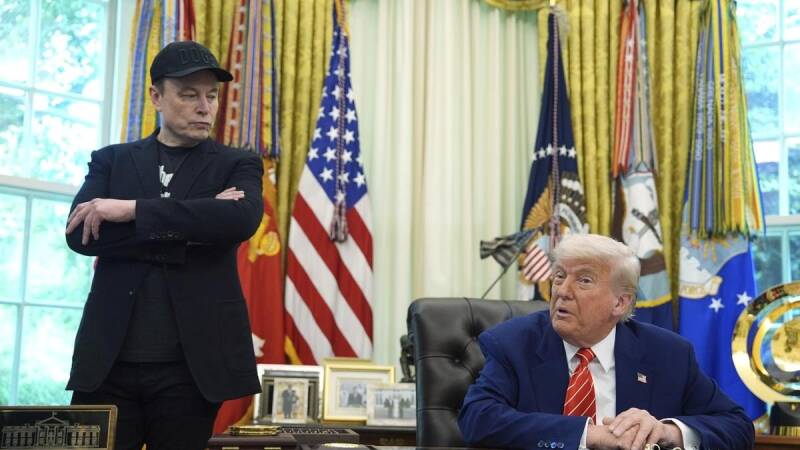President Donald Trump on Wednesday signed a sweeping executive order that removes regulatory barriers for the private space industry, including scaling back environmental reviews and streamlining federal approvals for launches. The move — widely expected to benefit SpaceX and its founder Elon Musk — aims to “substantially” increase U.S. commercial space launch activity by 2030.

President Donald Trump, right, speaks during a news conference with Elon Musk in the Oval Office of the White House, Friday, May 30, 2025, in Washington. | Photo Credit: AP
The order, titled “Enabling Competition in the Commercial Space Industry,” seeks to position the United States as the undisputed leader in both exploration and commercial operations. It comes as Trump, now in his second term, has ramped up rhetoric about returning astronauts to the Moon and eventually sending humans to Mars. Both flagship missions are slated to use SpaceX’s massive Starship rocket, currently the largest and most powerful spacecraft in history.
Transportation Secretary and Acting NASA Administrator Sean Duffy is directed to:
- Fast-track or eliminate environmental reviews for commercial launch and reentry licenses in consultation with the Council on Environmental Quality.
- Overhaul Part 450 regulations, which industry leaders have criticized for slowing launch approvals, and recommend changes within 120 days.
- Appoint a senior executive to lead the Office of Commercial Space Transportation and serve as a deregulation adviser.
Commerce Secretary Howard Lutnick must also propose a new framework for “novel space activities” within 150 days, excluding human spaceflight, and elevate the Office of Space Commerce to the Secretary’s office — a long-standing industry request.
Spaceport Development Gets Federal Push
The order instructs multiple agencies — including the Departments of Defense, Transportation, and Interior, along with NASA — to coordinate on accelerating next-generation spaceport infrastructure. This includes evaluating whether state coastal management approvals should be revoked if they block federally backed spaceport projects, and considering waivers from Endangered Species Act rules when national security is at stake.
Such measures could significantly speed construction at sites like SpaceX’s Starbase in Boca Chica, Texas, which has faced repeated environmental challenges and lawsuits over Starship’s launch impacts on nearby wildlife habitats.
Direct Impact on SpaceX
SpaceX, already dominating the global launch market with more than 130 launches in 2024, stands to gain the most from Trump’s deregulation push. The FAA had already approved in May an increase in Starship’s annual launch limit from five to 25, citing no significant environmental harm. The new order could raise that ceiling further and allow for even faster turnaround between launches.
By cutting environmental review timelines — often lasting months or even years — SpaceX could scale up Starship’s test cadence to match Musk’s “fail fast, learn fast” engineering philosophy, which he argues is essential for achieving rapid progress toward Mars colonization.
Analysts suggest this could also give SpaceX a stronger competitive edge over rivals such as Blue Origin, Rocket Lab, and China’s state-backed launch providers, cementing its role not only as NASA’s preferred partner but also as a dominant force in the commercial satellite launch market.
Not everyone is applauding. The U.S.-based Center for Biological Diversity condemned the move as “reckless,” warning it “paves the way for the massive destruction of protected plants and animals.” Critics say reducing oversight increases risks from launch explosions and debris fallout, citing multiple Starship failures that scattered material across sensitive coastal ecosystems.
Despite these objections, Trump’s order reflects a clear bet: that rapid deregulation will unlock a new era of U.S. space dominance — and that companies like SpaceX will lead the charge.


Add comment
Comments